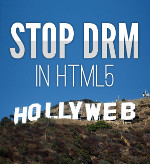This past Sunday's New York Times carried an article, "So Far Unfruitful, Fusion Project Faces a Frugal Congress" on the future funding prospects for the National Ignition Facility. NIF, located a few miles due east of the San Fransisco Bay on the campus of the Lawrence Livermore National Laboratory (Wikipedia entry), is a decades long program, started in the 1990's, to initiate fusion in a "peppercorn" sized nodule of nuclear fuel (a solid and gaseous deuterium-tritium mix). At issue are both the scientific and political value of continuing such a large scale research program. I'll argue here that it is -- especially in light of the unbelievably wasteful nature of typical large-scale government expenditures like the military and weapons budgets. And the incomparable pay-off of actually achieving a fusion reaction (even the one-time, pulsed event that NIF aims to achieve).
We first cover the physics of hot fusion (and remind the reader not to confuse this process with so-called "cold fusion) -- how it works and the some of the technology being developed to initiate it. Then we'll cover the history of the NIF and where it stands now. Finally, all too briefly, the funding of NIF and its erstwhile future.
What is fusion?All of the useful energy that falls upon the earth, courtesy of old Sol up there 93 million miles away, is a consequence of fusion reactions that occur in the solar interior. Basically, if you have a chunk of matter -- let's take water as our fusion `fuel' to emphasize how astonishing fusion is -- and you compress it and heat to sufficiently high pressure and temperature you'll initiate fusion reactions among the particles (protons and neutrons) that comprise the nuclei of the water atoms. Of course, in order to do this, you'll have to do a lot of squeezing (compressing) and heating. You'll pretty much need to heat and squeeze the water to temps and pressures that are found in the middle of the sun. (For the numerical folk out there the temp is about 15 million degrees Kelvin or Centigrade and the pressure is about 350 billion times earth's atmospheric pressure at sea level.)
Having explained the initiation of the fusion reaction, I should tell you why the heck you would do something that even sounds this difficult. It's because there's a huge pay-off when the reaction 'goes.' A tremendous amount of energy is released. By "tremendous" we're thinking of 'big' on scales compared to the sub-nuclear and atomic scales. In fact, the energy is chicken-feed for you and I. If a fusion reaction happened next to your ear you wouldn't even flinch. But when many, many (like on the order of 10^{23} per second) fusion reactions occur nearly simultaneously and in close proximity, you have the most intense -- and clean! -- source of energy known to human beings.
To do:
[Mention tritium "problem".]

